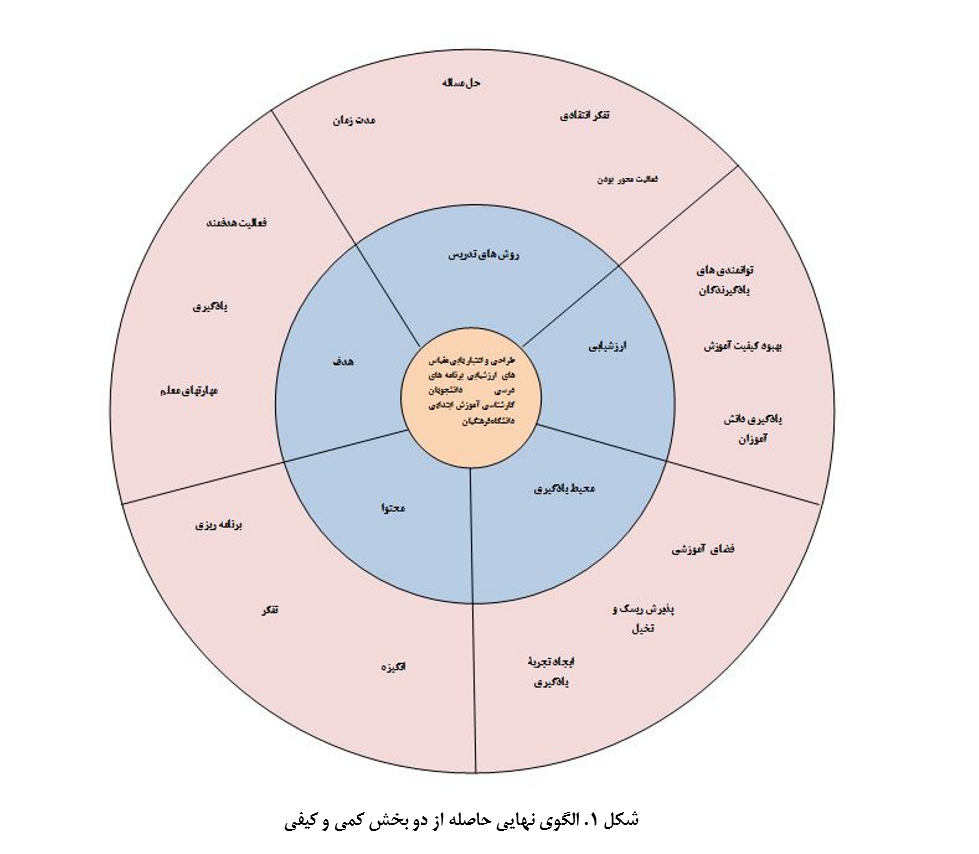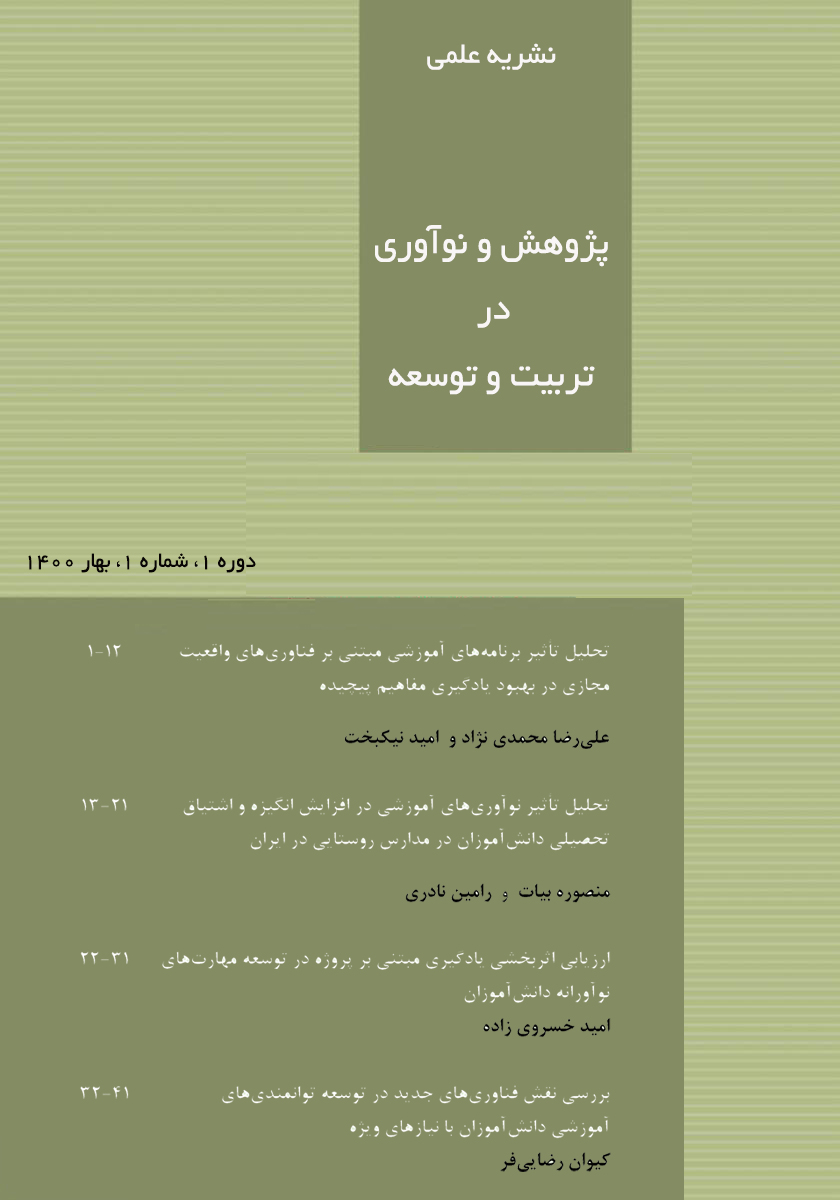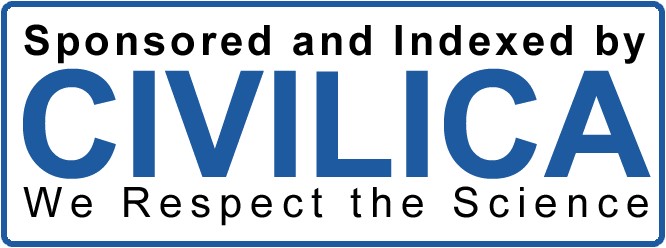Design and Validation of Evaluation Scales for Curriculum Programs for Undergraduate Students in Primary Education at Farhangian University
Keywords:
Goals, Teacher Role, Learning Activities, Content, curriculumAbstract
The present study aims to design and validate evaluation scales for curriculum programs for undergraduate students in Primary Education at Farhangian University. Based on its objective, the research is applied; based on data type, it is mixed (qualitative-quantitative) and exploratory; based on data collection time, it is cross-sectional; and based on the data collection method and nature, it is descriptive-survey research. The statistical population for the qualitative section of the study consisted of experts, 20 of whom were selected based on purposive sampling. The fuzzy Delphi method was used to select the experts. The statistical population for the quantitative section of the study included all secondary school teachers in Hormozgan Province, a total of 450 teachers, from which 360 teachers were selected based on the Cochran formula and using stratified and cluster sampling methods. Delphi technique and model fit assessment questionnaires were used. The validity and reliability in the qualitative section were assessed using quality criteria (credibility) and were confirmed. In the quantitative section, content, face, and construct validity were used for validity assessment, while reliability was evaluated using Cronbach's alpha and composite reliability, both of which were confirmed. The data analysis method in the qualitative section involved the Delphi technique. In the quantitative section, Pearson correlation method was used with SPSS-V23 software, and structural equation modeling (Confirmatory Factor Analysis) was performed using factor loadings for each indicator of the components and their respective components with Lisrel-V8.8 software. The results showed that the components of the evaluation scale model for curriculum programs for undergraduate students in Primary Education at Farhangian University were identified in 5 dimensions and 16 components, which include the dimensions of logic and objectives (3 components), content and learning activities (3 components), teacher roles and materials/resources (4 components), grouping and assessment/evaluation (3 components), and location and time (3 components). Furthermore, based on the positive mean differences, it was inferred that the status of the components was overall desirable, but slightly above the average. Additionally, the model validation results indicated that the alignment, understandability, generalizability, and controllability of the model were credible according to experts, and it was confirmed with a 99% confidence level. Finally, based on both quantitative and qualitative approaches, the final model was presented.
Downloads
References
Daniel G. Social Foundations. Asia-Pacific Journal of Teacher Education. 2023;39(2):165-76. doi: 10.1080/1359866X.2011.560651.
Douglas ES. Social Foundations of the Curriculum. Review of Educational Research. 2023;1(5):253-74.
Glatthorn W. The nature of curriculum. Journal of Education and Research. 2021;1(5):83-94.
Bailyn M. Teacher's participation in curriculum conceptualization and effective implementation of secondary school curriculum in Kenya. International Journal of Education and Research. 2021;3(7):283-94.
Dehghani M. Explaining Curriculum Objectives Based on Islamic Teachings. Biannual Scientific and Promotional Journal of Educational Sciences from an Islamic Perspective. 2021;6(10):5-29.
Walker G. Globalization and Education. International Journal of Education and Research. 2023;3(2):183-204.
Zamani Bakhsh R. Investigating the Impact of Curriculum on the Vitality of Students at Navab Safavi Elementary School in Bandar Abbas during the 2016-2017 Academic Year. Journal of Psychological and Educational Studies. 2020;3(22):107-20.
Esfandiyari T. Identifying Life Skills Required by Adults from the Perspective of Education Experts, Curriculum Planning Specialists in Theoretical Secondary Education, and Students in Theoretical Branches of Public Adult High Schools in Tehran: Shahid Beheshti University; 2021.

Downloads
Published
Submitted
Revised
Accepted
Issue
Section
License
Copyright (c) 2025 Journal of Study and Innovation in Education and Development

This work is licensed under a Creative Commons Attribution-NonCommercial 4.0 International License.










